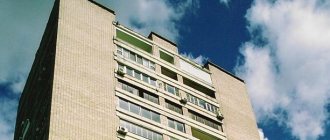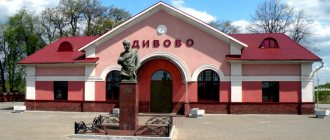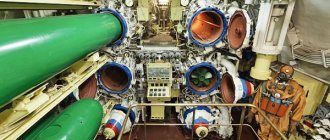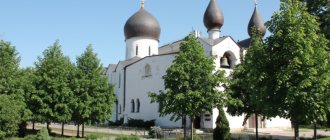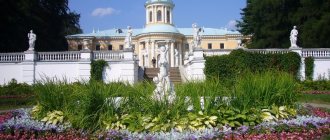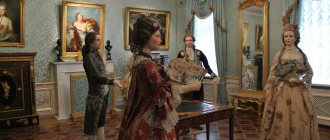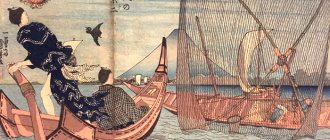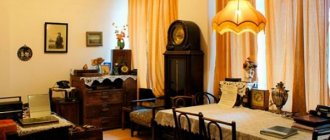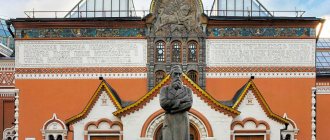The Tokyo National Museum is the oldest and largest national museum of Japan, one of the largest art museums in the world. It was originally founded in 1972 at Yushima Seido Shrine and moved to its current location in Ueno Park a few years later. Its total area exceeds 100 thousand square meters. The museum is a huge cultural center and is located in six main buildings: Main, Heisei, Oriental, Horyuji Temple Treasury, Kuroda Memorial Hall and Ceremonial.
Tokyo National Museum - Google Maps panorama
The Tokyo National Museum houses one of the largest and most significant collections of artwork and archaeological artifacts in Japan, consisting of more than 110,000 individual objects, including approximately one hundred national treasures. The permanent exhibitions display about 4,000 different pieces of art from the museum's collections. In addition, temporary exhibitions are constantly held here. Information in the museum is available in English, and you can use an audio guide.
The museum complex has several cafes and shops, and also hosts open-air exhibitions. In addition to the exhibition halls, the Tokyo National Museum offers a Japanese-style garden and teahouses open to the public in spring and autumn. They are located behind the Main Building.
© Tokyo National Museum Official Facebook Group
Throughout its existence, the museum changed its name several times. The original exhibition in 1872 was known as the "Ministry of Education Museum". Then, in 1888, it was renamed the “Imperial Museum”, and from 1900 it was called the “Tokyo Imperial Museum”. Following government reforms introduced after World War II, it was renamed the National Museum in 1947, and received its latest name, Tokyo National Museum, in 2001. It is also sometimes called the "Ueno Museum".
Exhibits at the Tokyo National Museum
The museum collects, preserves and displays an extensive collection of art and cultural objects from Asia, with a special focus on ancient and medieval Japanese art and Asian art along the Silk Road. There is also a large collection of Greco-Buddhist art here. In addition to national treasures, it houses more than 300 Horyuji Treasures and more than 600 other important cultural properties. The museum conducts research and organizes educational events related to its collections. The large museum complex consists of several buildings, each large enough to be considered a museum in its own right, and specializes in various types of art and exhibitions.
© Tokyo National Museum Official Facebook Group
Main building - Honkan
It opened in 1938 and was designed by architect Jun Watanabe. The main building has two floors, its area exceeds 21,500 square meters. The Honkan is located on the site of the former main hall of the Kaneiji Temple, which was destroyed during the Boshin War. It displays various works of Japanese art, ethnographic and historical documents and materials, ranging from ancient times to the 19th century. Visitors will see ancient Buddhist statues, painted sliding doors, scrolls, ceramics, maps, ancient Japanese traditional masks, clothing, armor and weapons. The collection introduces guests to the rich cultural values of Japan, showing its development and characteristics. The building was designated an Important Cultural Property of Japan in 2001.
© Tokyo National Museum Official Facebook Group
Ceremonial building - Hokeikan
To the left of the Honkan is the Hokeikan, the oldest building on the grounds of the Tokyo National Museum, erected in 1909 in honor of the wedding of Emperor Taisho. Hokeikan is a typical example of Western-style architecture during the Meiji period, designed by the architect Takuma Katayama. The building itself is a listed building and is registered as an important cultural property. The Ceremonial Building mainly houses temporary exhibitions. In recent years it has undergone several renovations to strengthen its structure. The educational and scientific center of the museum is also located here; conferences and seminars are organized.
East building - Toyokan
To the right of the Honkan is the Toyokan Building, designed in 1968 by Japanese architect Taniguchi Yoshiro. It displays archaeological finds and works of Asian fine art from China, Korea, Southeast Asia, Central Asia, India and Egypt. The exhibition introduces visitors to the cultural features of the eastern region and its connections with the culture of Japan.
© Wiii
Horyuji Temple Treasury
The museum's newest building, the Horyuji Homotsukan or Horyuji Temple Treasury, was built in 1999. It houses a collection of religious objects, consisting mainly of small elaborate statues and copper relief images donated by the Horyuji Temple in Nara. The building was designed by Taniguchi Yoshio in a minimalist style.
Kuroda Memorial Hall
Finally, just outside the museum grounds is the Kuroda Memorial Hall, which was built with donations from Kuroda Seiki, a Japanese artist known as the founder of modern Western-style painting in Japan. The building houses a collection of Kuroda's paintings and sketches, as well as other works of art donated by his family.
Heisei
Behind the Honkan stands the Heisei Building, a fairly recent addition to the museum, built to commemorate the wedding of the Crown Prince of Japan in 1993. It hosts exhibitions about ancient Japanese cultures, as well as large-scale special exhibitions.
© Wiii
Tokyo National Museum (東京国立博物館) or TNM, founded in 1872, is the oldest Japanese national museum, the largest art museum in Japan, and one of the largest art museums in the world. The museum collects, houses and preserves a comprehensive collection of Asian art and archaeological objects dedicated to Japan. The museum houses more than 110,000 objects, including 87 Japanese National Treasure Repositories and 610 Important Cultural Properties (as of July 2005). The museum also conducts research and organizes educational events related to its collections
The Tokyo National Museum houses and displays a collection of art and antiquities from Japan as well as other Asian countries. The museum also conducts research and studies regarding its collection of books, pipes and photographs related to the fine arts and makes these items available to scholars
The National Museum of National Cultural Properties of Japan (National Cultural Heritage Organization of an independent administrative institution) is committed to collecting and preserving the cultural properties of Japan and the East (art objects, archaeological sites, etc.), exhibition disclosure, research research, it is a museum to operate.
Founded in 1872 (Meiji 5), it is the oldest museum in Japan. This hotel is located in the Ueno Imperial Park neighborhood of Taito Ward, Tokyo. It consists of five exhibition halls, a museum and other facilities in the main building, Keio Hall, Toyokan, Geiseikan and Horyuji Treasury.
The museum is located inside Ueno Park in Taito, Tokyo. The facilities consist of the Honkan (本館, Japanese Gallery), Choikan (東洋館, Asian Gallery), Hyokekan (表慶館), Heiseikan (平成館), Hryūri-ji Hyomotsukan (法隆寺宝物館, Hōryū-ji Treasure Gallery), and Shiryōkan (資料館, Science Information Center) and other facilities The museum's premises include restaurants and shops, as well as outdoor exhibits and a garden where visitors can enjoy the seasonal view
The museum's collections focus on ancient Japanese art and Asian art along the Silk Road. There is also a large collection of Greco-Buddhist art
The museum dates back to 1872, when the first exhibition was held by the Museum Department of the Ministry of Education in the Taiseiden Hall. This marked the opening of the first museum in Japan. Shortly after opening, the museum moved to Uchiyamashita-cho (present Uchisaiwai-cho), then moved again in 1882 to Ueno Park, where it stands today. Since its inception, the museum has faced significant challenges, such as the Great Kant Earthquake in 1923 and a temporary closure in 1945 during World War II. Over the course of its more than 120 years of history, the museum has undergone significant changes and organizational reforms and administrative changes have gone through. through several name changes, which was named the Imperial Museum in 1886 and the Tokyo Imperial Life Museum in 1900, until it was given its current name in 1947
Honkan (Japanese Gallery): The original main building (honken) was designed by British architect Josiah Conder. It was heavily damaged in the 1923 Grand Kante earthquake. In contrast to the Western style of the original building, the design of the current main building by Jin Watanabe is more nativist. Construction of the Imperial Crown began in 1932, and the building opened in 1938. It was named an Important Cultural Property of Japan in 2001
It was completed in 1932 (Showa 7), completed in 1937 (Showa 12), opened the following year 1938. The project was a public offering and Hitoshi Watanabe's proposal was accepted. Like Meiji Jingu Treasures, it is a Japanese and Western architecture of architecture and technology, replacing the Japanese traditional wooden building with reinforced concrete. It is sometimes presented as executive crown style architecture with a Japanese style tiled roof on a non-combustible building such as a reinforced concrete structure. However, some researchers say that it is incorrect to classify the building as crown style because the design of the wall is not Japanese but Japanese.
In 2001, the name "Main Building of the Imperial Museum in Old Tokyo" was designated as an important cultural property. There are 26 exhibition rooms on the 1st and 2nd floor (including rooms that are usually closed and reserved), and the exhibition hall is arranged around a central grand staircase in a "b" shape. The exhibition features Japanese paintings, sculptures, crafts and writing. After it became an independent administrative corporation, it has another name, "Japan Gallery". He received the "Japan Design Competition Work Award" for 2006 in recognition of the performance of the main design building.
The first tenth rooms (2nd floor) are “Japanese Art Stream” with small themes such as “The Art of Buddhism”, “The Art of Tea”, “The Art of Tea”, “Noh and Kabuki”. We do exhibitions, First room "Akebono Japanese Art" "The Emergence of Buddhism" 2nd room "National Treasure Room" - only one national treasure is exhibited in rotation (Paintings/Booklets only) Third room "Art of Buddhism" "Art of the Court" "Zen Painting" and ink" 4th room "Tea art" 5th and 6th rooms "Samurai clothing" 7th room "Screens and noise" 8th room "Living environment" "Development of documentation" 9th room "Noh and Kabuki" 10th issue "Ukiyo-e and costume" On the 11th floor (1st floor) - 1st floor - "Exhibition by genre", and in 11-16 rooms sculptures, lacquer works, metalwork are presented , swords, ceramics, ethnic materials (Ainu, Ryukyus), historical materials are exhibited. There is no exhibition space for paintings, calligraphy and dyeing, and we exhibited in the Japanese Art Stream on the second floor. The "Donor Honor Room" that once existed was canceled due to the relocation of the museum store. 11th room – sculpture (Buddha statue etc.) 12th room – varnishing 13th room – metalwork, swords, pottery 14th room – crafts (thematic display) 15th room – historical records (historical material) Room 16 - Ainu and Ryukyus Room 17 - Storage and renovation Room 18 - Contemporary art Room 19 - Midori's face (experience corner) Room 20 - Museum shop. We will sell art, archaeology, history-related books and museum merchandise, including publications from the Tokyo National Museum. The Tokyo National Association for Museum Cooperation handles management and product development. Special rooms 1 and 2 (2nd floor). Small exhibition hall on the north side of rooms 1 and 10, exhibitions such as "New Collection". Special 3 Rooms (1st Floor) – Small showroom on the north side of Room 11, not currently in use. Special 4 rooms (1st floor). The small showroom on the north side of No. 20 is the coin locker room. Special 5 rooms (1st floor). This exhibition hall, which has a vast space on the staircase behind the large staircase, has been dedicated to a number of prestigious exhibition halls. In 1974 (Showa 49), Leonardo da Vinci's masterpiece "Mona Lisa" was shown and more than 1.5 million visitors were registered. It is also an exhibition hall that includes Tutankhamun, Delacroix's Statue of Liberty, Tiziano's Venus of Urbino and Kofukuji's Head of Buddha, and in 2007 (Leonardo da Vinci's) Annunciation was exhibited in Asia for the first time. Between 2008 and 2009, Buddha statues were displayed throughout Asia. In June-July 2014, the "National Taipei Museum and Nature Reserve" "Potato Cabbage" was presented. Takamadonomi Collection (2nd floor) – an exhibition of the Netsushi collection of Koin Takamadonomiu and Ken Norio's Queen Parents. Basement 1st floor – Midori-lion (educational space). There was a museum store until March 18, 2013.
Tōyōkan (Asian Gallery): This building opened in 1968 and was designed by Yoshiro Taniguchi. It's a three-story building that feels like a five-story building. Since the large floors are arranged in a spiral rising from the 1st floor along the mezzanine to the 3rd floor, and there are many stairs. A huge colonnade air space was made to reach from the first floor to the ceiling of the third floor inside, and the exhibition space is complex. There is also a restaurant and museum store on the ground floor
Yoshiro Taniguchi designed, opened in 1968 (Showa 43). China, Korean Peninsula, Southeast Asia, India and Egypt. The exhibition hall has 13 rooms (2 of which are not exhibitions or educational spaces). Having become an independent administrative corporation, it has the pseudonym "Asia Gallery".
It was closed from June 2009 to December 2012 due to the earthquake and restoration of the exhibition grounds, and it reopened on January 2, 2013. Before the renovation, the top floor of Toyokan was on the 3rd floor, but after the renovation, the middle 2nd floor and middle 3rd floor of the former are considered independent floors, the top floor is shown on the 5th floor. The exhibition hall area was increased from 3,409 square meters to 4,250 square meters with the renewal.
First room (1st floor) – Chinese sculpture Second room (2nd floor) – “Oasis” (space for spreading education) Third room (2nd floor) – India, Gandhara, Western region, Egypt, Western Asia 4th room (3rd floor) – beginning of Chinese civilization (Chinese archaeological) 5th room (3rd floor) – Chinese crafts (bronze clothing, ceramics, dyed fabrics, etc.) 6th room (3rd floor) floor) – “Oasis” (space for the dissemination of knowledge) 7th room (4th floor) – Chinese stone painting 8th room (4th floor) – Chinese paintings and records 9th hall (5th floor ) – Chinese crafts (varnishing, wood bamboo craft, jade, storeroom, glass, etc.) 10th room (5th floor) – Korean Peninsula Eleventh room (basement) – Khmer sculpture 12th room (basement) – Southeast Asia No. 13 (basement) – miniature paintings in India, textiles in Asia Museum Theater (basement). There is a museum theater that operates in conjunction with the Toppan print in the basement. You can appreciate 3D images of cultural property created by CG based on digital archives of cultural property. It opened in conjunction with the renovation of the Toyokan in 2013 in the form of an expansion and reorganization of the museum theater, which was located in the museum between 2007 and 2012. Museum Store (1st Floor) – At the same time as Toyokan's renovation in 2013, a museum store was opened on the ground floor.
Hyōkeikan: 1909 (Meiji 42), opening ceremony to celebrate the marriage of Princess Toyama Corona Yoshinori (later Emperor Taisho). Designed by court architect Katayama Touma (Kataya Tamaki). The building is considered an important cultural asset. This is a stone and brick two-story building in the neo-Baroque style with a dome in the center, and on the north and south - a central dome, the northern and southern domes under the dome - a staircase room. Front Entrance The left and right Lion statues are the work of Mr. Okuma Hiro. The exhibition hall has rooms 1, 2, 7 and 8 to the left and right of the first floor, three to six rooms on the second floor, and a ninth room on the first floor. It was originally considered an exhibition hall for decorative arts, and after World War II, before the opening of the Geuseican, it was used to display archaeological materials. After this there were times when it was used as an educational space for dissemination etc., but as of August 2021 it is closed due to the maintenance of an exhibition environment (it may be opened as a venue for large-scale exhibitions).
Heiseikan: Geiseikan serves primarily as a venue for special exhibitions, but is also a gallery of Japanese archaeology. The Japanese Archeology Gallery on the first floor traces Japanese history from ancient to pre-war times through archaeological sites. The second floor gallery is dedicated entirely to special exhibitions. The Heiseikan building was opened in 1999 to celebrate the marriage of the crown prince. The building also has an auditorium and lounge area
Hōryū-ji Hōmotsukan (Hōryū-ji Treasure Gallery): Artworks from the 319 Hōryū-ji Treasures, originally donated to the Hōryū-ji Imperial Household in 1878, are displayed in six rooms. The building was designed by Yoshio Taniguchi and equipped with the latest preservation technologies and was opened in 1999 after a complete renovation. The reference room on the 2nd floor mezzanine is a "digital archive" that allows visitors to view the entire Horyuji Treasures collection on a computer, with explanations provided in Japanese , Korean, Chinese, English, French and German. The restaurant is located on the ground floor
In 1878 (Meiji 11) in 1964 (Showa 39) was opened to preserve and display about 300 "Horu-ji Treasure Temple" dedicated to the imperial family of Horyuji. However, since the original building has doubled as a showroom and warehouse space, opening day is limited to every Thursday only, and it was not released on a rainy Thursday. The current building is the second generation, opened in 1999. Materials such as gold and copper Buddha Strong work becomes a permanent exhibition, and it is open to the public every day, except on closed days at the museum, regardless of weather. Designed by Yoshio Taniguchi (designer Toyokana, child of Yoshiro Taniguchi). For more information, see Treasures of the Horyuji Temple Temple.
Garden: In the center of the main building is a garden with a pond, which contains the remains of the former Kanonji Garden. The garden will be open by appointment only in the spring and fall. The garden contains the following buildings. Akikan - former Achichi Prefecture Akiti, which was donated in 1933 to businessman Masuda Takamiya, was relocated in 1936. Kujyo-kan – It was donated in 1934 and was moved in 1936, which was located at Kujyo Dukaku's residence in Tokyo Akasaka. Rokkoan – This was an Edo era tea room that was originally in Nara and Kofukuji, which was moved in 1877, the earliest period in the museum. Harunaka Rō - Kusamura Ryuzen, built in Setoyuku, Kusan, after several moves, was moved to your location in 1959. Shinkansen. This was the Kobori Enshu tea room, which was located in Fushimi in Kyoto, and was relocated in 1963.
It was the gate of the Edo residence of the former Onahata Tottori family of the Ikeda Clan, which was built during the Edo era at Daimonokuji (current 3-hungry Marunouchi). It was moved as the entrance to Tsunamiya Goten from Shiba Takawawa Taiicho to Meiji 25, later used as the main gate of the Takawada East Palace at that time. Declared an important cultural property of the country in 1945, it was transferred to the museum in 1945 and is preserved. A makeshift building equipped with a turning point to the left and right of the gate. At the Daimyo Yakimonium Gate, it is sometimes called the red gate of Tokyo University and is also called the black gate.
In addition to the museums (collection of books, photographs and other materials), former Hokusai branch Takara (heavyweight), cloud crest of the Edo Kamiado clique of the Fukuoka Chikuzen clan, Jenner statue. The restaurant is located in a building attached to Toyo Kanan and the Horyuji Treasury. In addition, the hall houses the headquarters of the Japan Crafts Association.
Kuroda Memorial Hall: On the west side there is a road separate from the museum. It was built in 1928 (Showa 3), using the Kuroda heritage by Western artist Kiyotaki Kuroda (1866 – 1924), designed by Shinichiro Okada. There is a Kuroda Memorial Room and a Special Room where Kuroda's works are displayed and exhibited, including Lakeside, Satisfaction, Satisfaction. The Memorial Hall has long been under the responsibility of the Tokyo National Research Institute for Cultural Properties (Tokyo National Cultural Property Research Institute), but in 2007 two independent administrative corporations, the National Museum and the Institute for Cultural Properties Research, integrated and became independent. The creation of the National Organization for Cultural Sites, the memorial hall became the jurisdiction of the Tokyo National Museum. After the earthquake it was proven that he resumed it on January 2, 2015. The special room is opened three times a year, only for two weeks each.
Yanase-so: Saitama Prefecture Tokorozawa City Situated on a hillside, the original was a businessman and villa in Matsunagasu Yasuei, a tea ceremony. The "Huang Jing Tower" that is built indoors is the one that Matsunaga received in 1930 (Showa 5 years old) Murano family residence, which was located in Yuukubo Village (present • Higashikurum shi Yanagibe), former Tokyo Prefecture, and moved to the present place. It is considered an important cultural asset of the country as the home of an Edo period master. The village of Yanase, including Hwang Ling Cheng, was donated by Matsunaga to the Tokyo National Museum in 1948 (Showa 23). It is open every Thursday.
collection: The collections of the Tokyo National Museum ("Column" in museum parlance) number over 110,000. This is not a "number of points" but a "number of cases" but in archaeological materials and the like. There are cases where hundreds of excavated objects from individual ruins are counted as "one case" in a piece and counting." In addition to the museum's collections, there are more 3000 deposits from shrines and private collections. The acquisition history of the collections has been (1) acquired within the museum's budget since the beginning of the Meiji era (2) gifts from individuals and organizations, (3) the post-World War II Cultural Property Protection Committee of the Cultural Affairs Agency) and others that have been modified. In addition, the so-called Horyu-ji Temple Treasure was dedicated to the Imperial Family from Horyu-ji in 1878 (Meiji 11), which was under the jurisdiction of Miyauchi Province, but was transferred to the National Museum in 1947 (Sven 22). Approximately 7,200 of these are on display, and approximately 5,500 items are displayed annually by LY.
Collections are to be collected and exhibited from Japan and Asian countries in the region, from prehistoric times to the end of World War II. In addition, among the works created in the Japan region, an independent exhibition room on Ainu art and Ryukyu art is staged. Oriental art places special emphasis on art in China and the Korean Peninsula, which is geographically close to Japan and has great influence on cultural aspects, but in addition to Egypt, India, Southeast Asia (Vietnam, Thailand, Khmer, etc.), Middle Art objects such as the Middle East (Mesopotamia, etc.), Central Asia, etc. In addition to this, ethnic art from the South Pacific Islands, Western modern ceramics and glassware are also kept but not usually displayed.
In addition to what falls under the category of so-called artistic objects, historical materials, books and photographic materials are also stored in large quantities. Typical examples of historical materials to be collected include the Nagasaki Magistrate's Office relating to Christianity, the image map (road map) created by the Edo Shogunate, "A copy of the Gokoda drawing with a parallel drawing of "Ken no Ebisu and Miariagari", 80 volumes , Tadao Ino's overview map, the related Japanese investigation document, which is the first cultural property survey in Japan, the old book book of Edo Castle, etc. The museum located in the western part of the museum has historical materials, such as book materials, collecting historical materials such as books, graphic maps, maps, photographs and microfilms such as books mainly from the Edo period can be viewed by researchers. The flight was undertaken. In addition, the world postage stamp collected during the Imperial Museum era is also one of the leading collections in Japan, although it is not usually displayed.
The purchase of column objects within the museum's budget dates back to the museum's founding in the Meiji era. One of the representative collections of the archaeological department of Kumamoto Prefecture Eta-Funayama (National Treasures) was Shirakawa Prefecture (now Kumamoto Prefecture) at that time in 1873 (Meiji 6), a year after the hall was established. In addition, the female Bodhisattva statue (national treasure), which is regarded as masterpieces of Heian paintings, the hand-held Maki boxes of Hakabashi Ogata Koin, and the National Treasure Fuabashi Komi Yukina, this work before the museum moved to Ueno Park. It was purchased from 1878 to 1979 (Meiji 11-12).
Donations from individual collectors also make a significant contribution to the improvement of library products. Among them are the Takashima collection of Chinese paintings (donated by Takashima Kikujiro), the Yokogawa collection of Chinese ceramics (donated by Yokokawa Tamosuke), the Hirota collection of mainly Chinese ceramics and tea ceremony (donated by Hirota Matsushi), the collection of Korean Korean art (Takeshi Ogura collection, donation of the conservation association foundation Kokura collections) etc. are known. Although this is not a donated item, the Tokyo National Museum houses approximately 8,000 collections of Ukiyo Matsukata Kojiro (known as a collector of Western art, 1865-1950).
Special Exhibition: Before Geyseyanka opened, about twice a year, five or six times after that. The special exhibition includes items that the museum organizes and organizes on its own and those that are co-organized with newspaper companies/television stations. In the latter, there are things that represent the collections of overseas museums, such as the "Big Buddhism Exhibition", such as the "Kofukuji National Treasure Exhibition", which collectively presents the treasures of the shrine temple. In addition to the special exhibition at the museum, the museum hosts a touring exhibition showcasing the museum's collections in a variety of museums in Japan and abroad. Additionally, a "special exhibition" is held from time to time on a smaller scale than a special exhibition. This is a typical theme such as "Shuhei" "Makie" and the like on a normal display.
Education: In addition to monthly lectures, topic lectures, continuous lectures, memorial lecture meetings are held in the hall in Geiseikan during a special exhibition, etc. "Column Commentary" is an exhibition hall that listens to expert comments while viewing the actual exhibition and is held once a week. In addition, there are occasional volunteer tours, gallery talks, workshops, etc. "School Program" for children, "Internship" for graduate students, and "Campus Members" system for university faculty/students. In addition, there are joint projects from time to time with concerts, entertainment such as tea ceremonies, other social education facilities in Taito Ward, etc. In April 2007, the Lev Midori educational distribution space opened and is now expanding its activities to promoting education mainly in room 20 on the 1st floor of the main building.
Publishing: The agency's newspaper, Tokyo National Museum News (formerly National Museum News), was originally published as a tabloid paper in 1947 and is now published bimonthly, mainly for exhibitions and entertainment guides. The MUSEUM Research Journal is a monthly magazine published in 1951 and publishes three to four articles by researchers inside and outside the museum.
"Tokyo National Museum Catalog Catalog" Publications have continued since "Ukiyo-e Prints Hen" was published in 1960 as a catalog catalog by genre of the museum's vast collection of objects. In addition to the above, a masterpiece illustration, a newsletter, a research report on collections, etc. are published.
Museum Items: Museum Items are textile items created from cultural assets such as ancient and archaeological artifacts covering various parts of the eastern region including Japan, stationery and picture postcards, and are sold at the museum store in the museum. It is also considered a precursor to the original merchandise sold in museums and museums throughout Japan.
Share link:
- Click to share on Twitter (Opens in new window)
- Click here to share content on Facebook. (Opens in a new window)
- Click to share on Pinterest (Opens in new window)
- Click to share posts on Tumblr (Opens in new window)
- Click to share on LinkedIn (Opens in new window)
- Click to share on WhatsApp (Opens in new window)
- Click to share on Skype (Opens in new window)
- Click to share on Telegram (Opens in new window)
- Click to share on Reddit (Opens in new window)
- Click to share posts on Pocket (Opens in new window)
Tags: Japan Tokyo National Museum
Opening hours and prices
Tokyo National Museum is open on Sundays and Tuesdays to Thursdays from 09:30 to 17:00 (last entry at 16:30). On Fridays and Saturdays it is open from 09:30 to 21:00 (last entry at 19:30). Kuroda Memorial Hall is open to the public from 09:30 to 17:00 (last entry at 16:30).
The museum is closed on Mondays, December 26 and January 1. Open on Mondays on days that fall on national holidays, in which case the museum is closed the next day.
Entrance fees:
- for adults - 1000 yen,
- for students - 500 yen,
- for students, people under 18 years old and over 70 years old - free.
Near the main gate, visitors can rent audio guides, which are available in Japanese, English, Chinese and Korean for regular exhibits. Rent is 500 yen per visitor.
© Tokyo National Museum Official Facebook Group
Adults accompanying children under 18 receive a 100 yen discount on general exhibition admission. The discount can be used by up to two adults with one child.
Admission to regular exhibitions is free on International Museum Day (May 18), Elders Day (third Monday in September) and Culture Day (November 3). Admission to the Kuroda Memorial Hall and the Science Information Center is also free. Free Wi-Fi is available throughout almost the entire museum complex.
Content
- 1 Names
- 2 History 2.1 Yushima Seido Exhibition
- 2.2 Uchiyamashita Museum
- 2.3 Ueno Museum
- 3.1 Honkan (Japanese gallery)
- 6.1 Quotes
